|
One of my students nudged me about my blog yesterday. Oh, right. I really should post something, even just to say, "yep, still here!"
Yep. Still here! It's been a whirlwind of a year since I last posted. I feel like I've traveled more than I've been home. I spent 4 incredible months at John C Campbell. I was filmed for a few episodes of Man at Arms. I got to teach at John C Campbell, Touchstone, Brookfield, Central Maryland Blacksmith Guild, and I'm prepping up now for a class at the Banton-Smith Center. I got to help found the Society of Inclusive Blacksmiths. I demoed for Central Virgina Blacksmith Guild, and will be demoing at NC-ABANA this weekend. In the spare moments in between, I've been teaching at my shop in Frederick, MD, doing some commissions, and sketching out curriculum for some new offerings! Each one of those experiences deserves to be its own blog post and, indeed, I have half-finished drafts that may, one day, get posted. I've learned a lot, but need some time to process all that into coherent blog posts. I am looking forward to spending some dedicated time shop in October, November, and December. I've just posted the class schedule for those three months. We're planning an open studio soon, so stay tuned! I just got back from the Cascadia Center for Arts and Crafts where I joined 10 other blacksmiths for 5 days of blacksmithing and conversation about how to make blacksmithing more inclusive. We are passionate about making space in this craft for all who want to participate, and especially passionate about making space for folks who have found it difficult to pursue the craft because of bias or discrimination.
You can check out our website for our philosophy, mission, and road map as well as upcoming events. I'm really excited to be part of this group! We also made a really sweet bench! 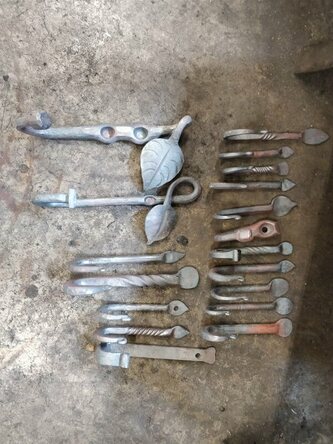 The hooks I worked to "fix", all lined up. I am very impressed by the variety of styles! The hooks I worked to "fix", all lined up. I am very impressed by the variety of styles! (Oops. This didn't get posted last year!) I was back down at the John C Campbell Folk School last week for Blacksmith Work Week (check out this amazing walk-through video taken during work week!). During this week, we work on shop maintenance, tool repair, and we make things for the school. I arrive, hungry to fire up the forge and put my hammer to work. The resident artist of blacksmithing, Paul Garrett, hands me a giant can of hooks, and explains that over the years, he's collected nearly four cans of abandoned hooks from the window sills and the scrap bin. The hooks all need a little bit of work to be usable; some just need holes drilled. Some are half-finished. Others need some re-shaping. I set to work. Hooks tend to be some of the first projects that folks do when they first learn to smith--and they are great first projects because there's an incredible opportunity for variety. (If you have any question about the staggering variety of hooks you can make, check out the 366 Hooks project done by Matt Jenkins of Cloverdale Forge in Winnipeg, Canada.) I've been making hooks since I started blacksmithing so I was pretty confident that I could knock this task out easily. And WOW, did I learn a LOT. I make a point to NOT work on my student's work. In my post "Mistakes were Made" I wrote: "Mistakes and their fixes are THE MOST IMPORTANT PART of learning. I work extra special hard to create a safe space for students to learn and explore. I'm here to help, to answer questions, to provide options, encouragement, and moral support, but students get to make --and fix-- their own mistakes. And that means that they are empowered to do their own troubleshooting, which makes them a better smith down the road." What kinda blew my mind about these hooks is that they were REALLY GOOD, but usually somewhere along the line, the student did something that made continuing to work on the hook especially challenging. In one case, they cut the metal short enough that it was challenging to hold the hook. In another case, the student made the hook out of square stock, but in bending the cup of the hook, the metal naturally bent on the diamond, so the hook appeared crooked. And it occurred to me that this is a prime example of beginners working harder than more experienced smiths. No experienced smith would set themselves up for these challenges. And yet--this exploration into how the metal moves, what is easy to fix and what is more challenging--is absolutely critical to developing the experience necessary to be a lazy blacksmith. To be an efficient blacksmith. To understand the metal. To really understand how deep this craft is. As a teacher, I guide students around a lot of these challenges, sometimes unconsciously, sometimes consciously. (In fairness, we have a finite amount of time together and I do try to help folks be successful at their projects in the time we have!) It's a good reminder of how important it is to let folks explore.  The path to the Clay Spencer Blacksmith Shop at the John C Campbell Folk School. The path to the Clay Spencer Blacksmith Shop at the John C Campbell Folk School. Eight years ago, I signed up for my very first blacksmithing class at the John C Campbell Folk School. At the time it felt like such a crazy idea--to put my life on pause for a week and go immerse myself in learning something new. (They say that the Folk School changes you, and that's been emphatically the case for me.) Over the years those classes, those pauses. became more and more crucial to me. They became opportunities to reset, to unlearn bad habits, to master new skills, to explore new ideas, and to connect with other creatives and metal-heads. Each pause is an opportunity to become a better blacksmith, a better teacher. This October, I'll be returning to John C Campbell for four months as part of their student host program. I am very excited to be returning to the shop where I first learned to play with hot steel. The Folk School is one of my favorite places on the planet; a home away from home. Some of the best blacksmiths teach there, and I'm excited to have the opportunity to learn all I can from them. (It's even possible that I may take some non-blacksmithing classes just to shake things up a bit!) I'm acutely aware that it's a long time to step away from Ms Caitlin's School, so if you've been considering taking a class, I'll be teaching here until September 27th, so sign up now to reserve your spot! If you can't fit in a class with me this Fall, check out this amazing resource of other blacksmithing schools, come see me at the Folk School, and stay tuned for exciting new class availability in February 2018! And naturally, stay tuned for updates from Brasstown, NC! 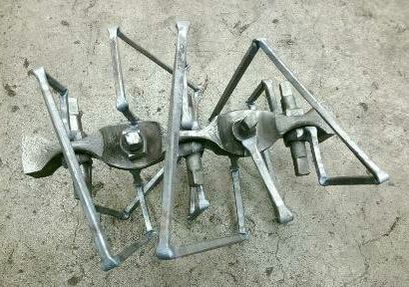 Explore! 2016 Explore! 2016 I was not the best math student. It started early. I buckled down and memorized multiplication tables, but fractions were... difficult and confusing. I liked the puzzle of algebra at first, but keeping track of the decimal places and negative signs was like herding cats. I thought geometry was really cool, but I didn't have an intuitive sense for whether the answer made sense or not. By senior year of high school, I was being tutored by my teacher twice a week and my confidence in math was pretty dismal. I took calculus in college and the fact that I remember nothing about it leads me to suspect I've consciously blocked it out. (Stats were a bit different--more learning the concepts and knowing which buttons to press when--which was lucky because I had to take 3 stats classes.) And then I took up blacksmithing. I attended Blacksmith Days at the Blacksmith Guild of Central Maryland in 2010 where Mark Aspery was giving a demonstration on some complicated joinery that was the subject of his third book (buy the books). He was talking about the math necessary to get everything to fit correctly. I felt that old familiar tightness in the back of my throat. Ah, my arch nemesis, we meet again! But Mark wasn't advocating for precision down to three decimal places; that's the realm of machinists. Blacksmiths need to get close enough. Close enough so that it fits. Close enough to look right. Close enough so that you don't have to do a lot of extra work. "Okay", I thought. "I can do that. Maybe." In 2014, I took a class with Matt Jenkins at the John C Campbell Folk School and tried my hand at mortise and tenon joinery for the first time, making a garden trellis. Making a tenon on one end of the bar is just a matter of using the tools correctly. Getting the bar between two tenons to be a specific size doesn't happen by chance. I broke out Excel and programmed it to calculate the stock size I'd need to start with for each piece. A few weeks later, I gave a demonstration about the project at Central Virginia Blacksmith Guild and shared my experience. That was the beginning. [You don't NEED math to do amazing things in metal. It's just that math helps newbies skip over about 10-20 years of trial-and-error experience.] In 2012, the flowchart How to Tell if a Toy is for Boys or Girls: a Guide made the rounds. I think about it every time I have a conversation about being a FEMALE blacksmith.
Let me just confess right here that I don't use ANY of my lady parts for forging. (I also don't call them lady parts.) We have historic documentation of female blacksmiths that goes back centuries, and includes some women who owned their own shops. Check out some of these articles: Women's Work, With all the Grace of the Sex, What Women Blacksmiths Wore (featuring Aislinn Lewis!), and Pre-20th Century Female Blacksmiths. It seems evident that female blacksmiths were more common than we imagine, but still rare enough to be of note. And it's still that way today. I remember the day my neighbor hollered at me from his porch, "I done never seen a WOMAN blacksmith before!" (nevermind that he'd probably never met a blacksmith of any sort before). My father joked weakly that I was taking up blacksmithing to meet men. I have met men. Almost exclusively men. And they're generally spectacularly awesome people. But I notice every time I've ever encountered a woman wielding a hammer. Still rare enough to be of note. And that's not even mentioning the visible lack of diversity in skin color, disability, age, etc. Here's the thing: a lack of diversity breeds a lack of diversity. The idea that "my sorta people don't do this" can be a whisper in the back of your head, or shouted at you across the street. It can be wrapped in a joke, or coded with additional adjectives ("FEMALE blacksmith"). You may be celebrated or ignored because of things about you that have little to nothing to do with blacksmithing--often things that aren't even under your control. And so, even if you think that blacksmithing would be fun to try, it can be just a little bit harder to get around to swinging a hammer. Culture is a big bully. I started Ms Caitlin's School in 2015. I started it in part because it's a passion of mine. But also because I want to provide a counter example. People like me DO blacksmith. And so can you. I'm tremendously excited to work with anyone and everyone who walks through my door. I'm doubly excited if that helps to increase diversity within the blacksmithing community. So I hold classes specifically for women. I'm trying to reach past that voice that whispers "people like me don't blacksmith" and say, "Everyone can be a badass. Come play." Upcoming classes for women: 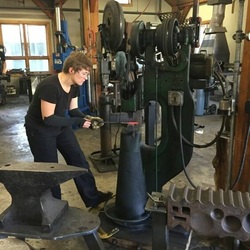 Caitlin at the power hammer. John C Campbell Folk School Caitlin at the power hammer. John C Campbell Folk School I read an article about Lance Armstrong before his fall from grace. The article talked about how Mr Armstrong devoted all of his energy to biking; if he wasn't training, he was conserving his energy so that he could make the most of his next training session or his next race. I'd never thought of it that way. I thought of athletes as the folks who go out of their way to take the stairs. To lift the heavy thing. To go at top speed just because they can. But this article (I'm trying to track it down, please bear with me) asserted that Lance Armstrong takes the elevator. Energy is a limited resource for all of us. For some, it's an extremely limited resource (see spoon theory). Sometimes folks (think: small children, people on certain legal and illegal substances, morning people) don't *seem* to have limits, but then things are quiet for a moment and you find that they've fallen asleep. It can be incredibly useful to keep in mind that there is a finite amount of work that can be accomplished in a day. (Okay, yes, I will acknowledge that some of you will find this thought very depressing. That doesn't make it less true, but if you need a minute, please take a minute. It gets better, I promise!) Alright! Glad to have you back! So here's the good news: Having limited energy, limited time, and only so much work you can accomplish in one day is a great reason to be LAZY. Yes, that's right. I think we should all be LAZY. But I think you should be lazy in order to get more done. Consciously choosing to do things that save you time and energy means that you can smith for longer.
Blacksmiths are a very resourceful group of folks. They are always on the lookout for ways to save time and energy. Send me your favorite lazy blacksmith tip ([email protected]) and I'll add it to the list!
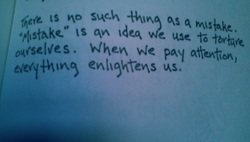 "There is no such thing as a mistake. 'Mistake' is an idea we use to torture ourselves. When we pay attention, everything enlightens us." --Cheri Huber, That Which You are Seeking is Causing You to Seek My student swings the hammer and misses the mark. "I'm sorry!" the words leap to lips and spill out, dismay clearly evident. No one is injured. The hammer simply didn't fall in the right place. "No worries!" I say, "This is part of the learning process!" And I smile. Then we talk about how the metal reacted to the errant swing. I point out that something that was a "mistake" in one situation ends up being a "technique" in another. We discuss and move on. This scene has played out not once or twice, but dozens of times. And the dismay on my student's face secretly breaks my heart. It breaks my heart partly because making mistakes is a crucial part of learning to do something the right way. Niels Bohr said "An expert is a person who has found out by his own painful experience all the mistakes that one can make in a very narrow field." It's not a snappy quotation, (and ohmygosh, implying only men can be experts!!) but look at him allude to "painful experience". Look at how he talks about "all the mistakes". Learning can be really hard, folks. My students want to learn, be successful, do amazing things, but there is a crushing fear of making mistakes. But each mistake can be a treasure trove of learning, if we pay attention. Errors are inevitable, but an experienced smith can identify errors early on, and fix them before they become problems. And how do you become an experienced smith? Well, you make all the mistakes there are to make. (And you watch others make mistakes and fix them. And you read about others making mistakes and fixing them. And you try different fixes to the same mistake. And on and on and on.) Mistakes and their fixes are THE MOST IMPORTANT PART of learning. I work extra special hard to create a safe space for students to learn and explore. I'm here to help, to answer questions, to provide options, encouragement, and moral support, but students get to make --and fix-- their own mistakes. And that means that they are empowered to do their own troubleshooting, which makes them a better smith down the road. When I was first learning how to smith, there were a lot of well-meaning folks who tried to help me avoid making mistakes. I lost track of the number of times that someone took my hammer out of my hand and "fixed it" for me. This happened most memorably in the middle of a speed forging competition. Because of this, I became very interested in what I could learn from my mistakes, and I think I'm a better smith because of it.  PUFFINS!!! PUFFINS!!! I burned out last summer. I probably don't have to describe the emotional exhaustion, the hopelessness, and the eternal frustration because burn-out is pretty common (http://www.statista.com/topics/2099/stress-and-burnout/). If you're not feeling burnt out yourself, it's likely that half of your friends could fill you in on what it's like. But this isn't a post about burn-out. It's a post about puffins. Normally when I travel, I research everything. But when I ended up in Iceland for a whirlwind business trip, I was completely unprepared. I found myself on top of a plateau overlooking black sand beaches at dusk, and I was astonished to see THOUSANDS of puffins perched on the cliff edge, riding the thermals, grooming each other, and hovering mid-air, wings invisibly flapping. Puffins, it turns out, flap their wings 400 times per minute (https://en.wikipedia.org/wiki/Puffin), which makes them look like little sad-eyed, colorful-beaked, torsos zooming about. Giant clown-faced humming birds. I recorded a little video of my unabashed excitement, but it was automatically deleted by my phone. I wish so fervently that I still had that clip because it captured the exact moment when I fell in love with the world again. (Okay, I found a fragment of a video from that day.) It's possible that I cried a little bit. It's possible that I hugged a random tourist. It's possible that I watched the birds until it was too dark to see them anymore. I wouldn't say that my life changed dramatically in that moment, but it reminded me how important it is to see and do new things. And then I ran into this article: http://www.nhs.uk/conditions/stress-anxiety-depression/pages/learn-for-mental-wellbeing.aspx I've noticed that doing new things helps me handle stress and depression better. It makes my world larger and more full of hope and possibility. If you're struggling right now, I hope that you find your puffin. Iceland should be on your short list--it's spectacular. But if you need something a bit closer to home (and home is within driving distance to Frederick, MD), I humbly offer my blacksmithing lessons. There is obviously no way that I can claim that blacksmithing treats stress, anxiety, or depression. And there's no way to predict whether you'll fall in love with it like I did. But it's widely believed that exercise helps mental-well-being, and you'll definitely get some exercise swinging a hammer. And you get to make art. And meet me, and I'll tell you all about the puffins in person. Caitlin |
AuthorBlacksmith, instructor, mischief-maker. Archives
November 2024
Categories
All
|
The legal stuff (disclaimer, privacy, terms, opt-out)
Frederick Location: 26 West All Saints Street, Frederick, MD 21701
Frederick Location: 26 West All Saints Street, Frederick, MD 21701

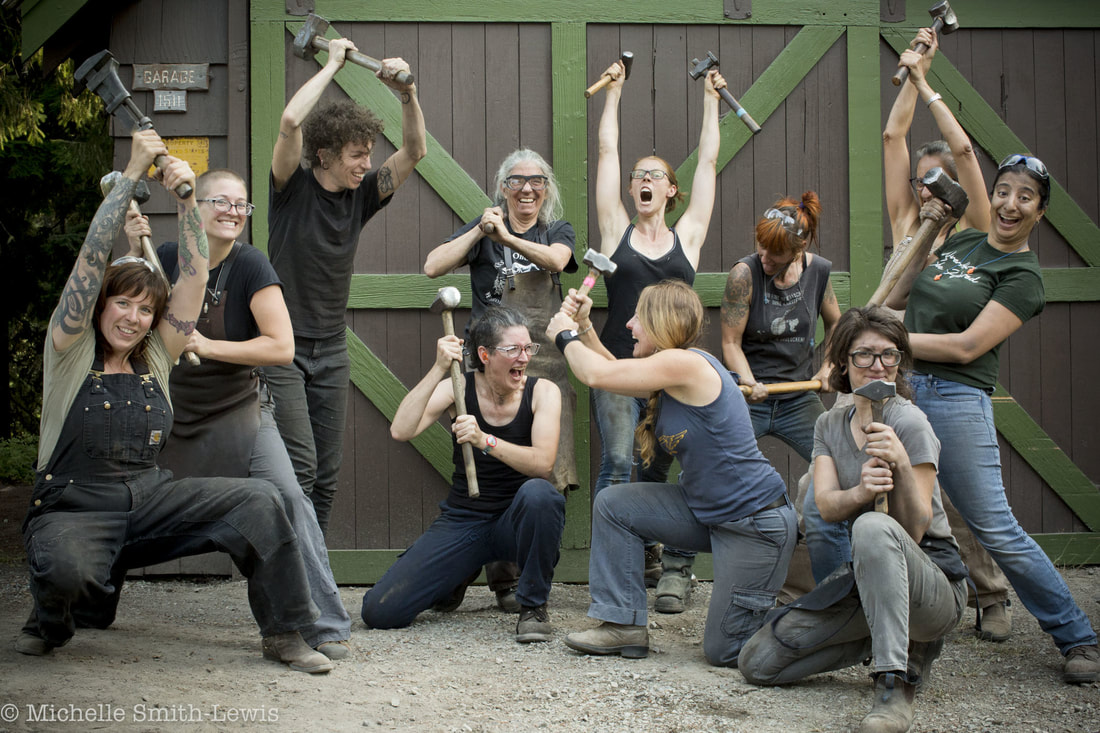
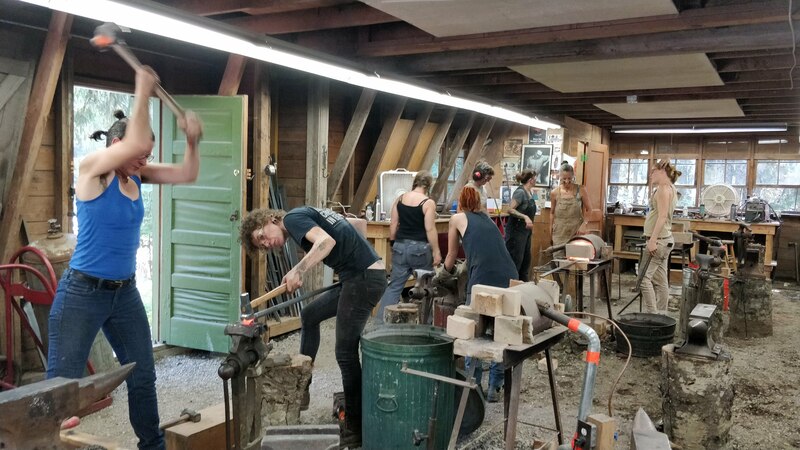
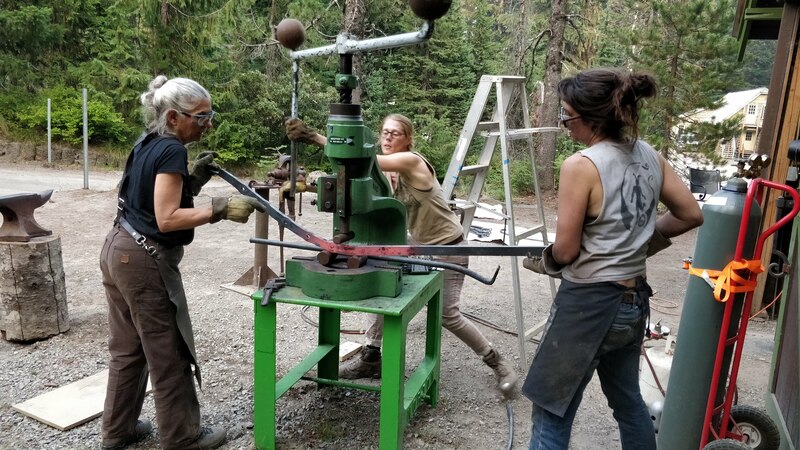
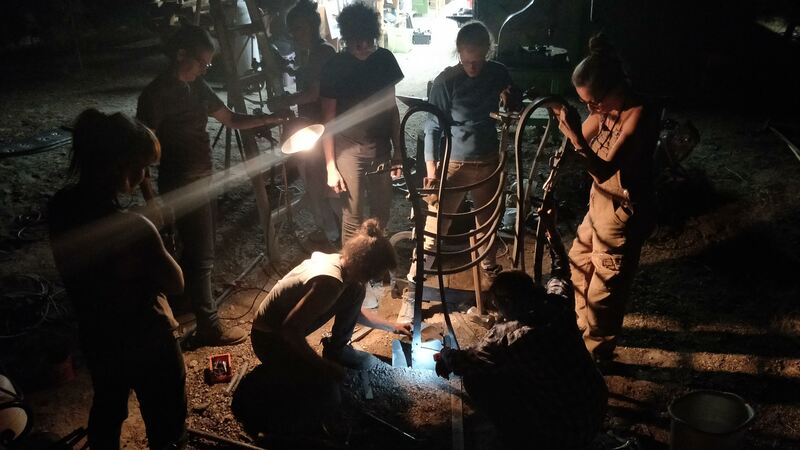
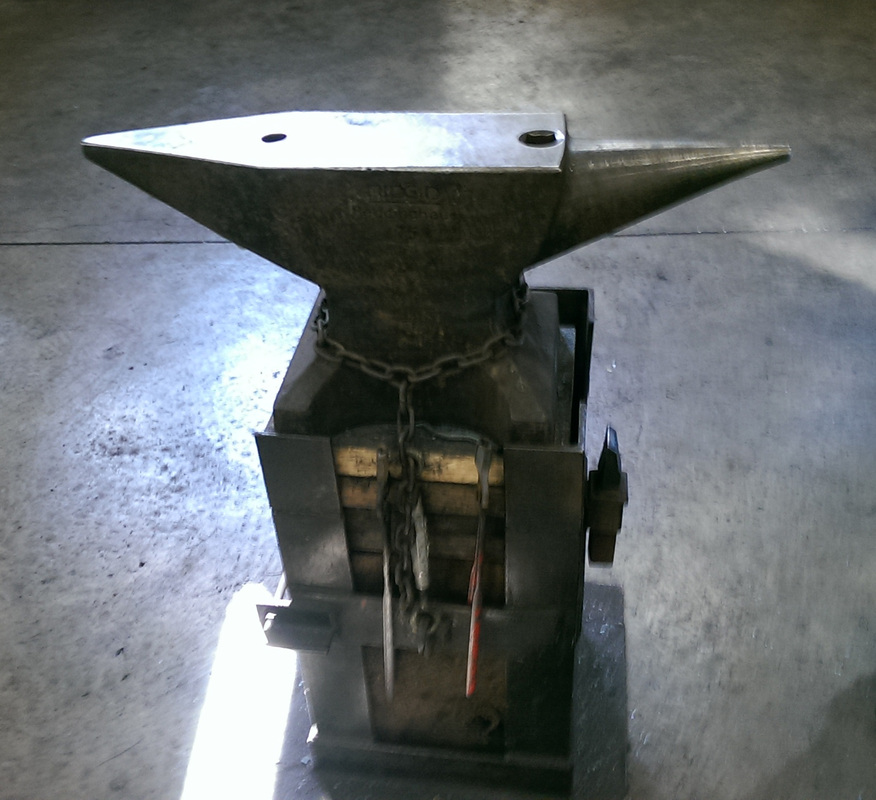
 RSS Feed
RSS Feed